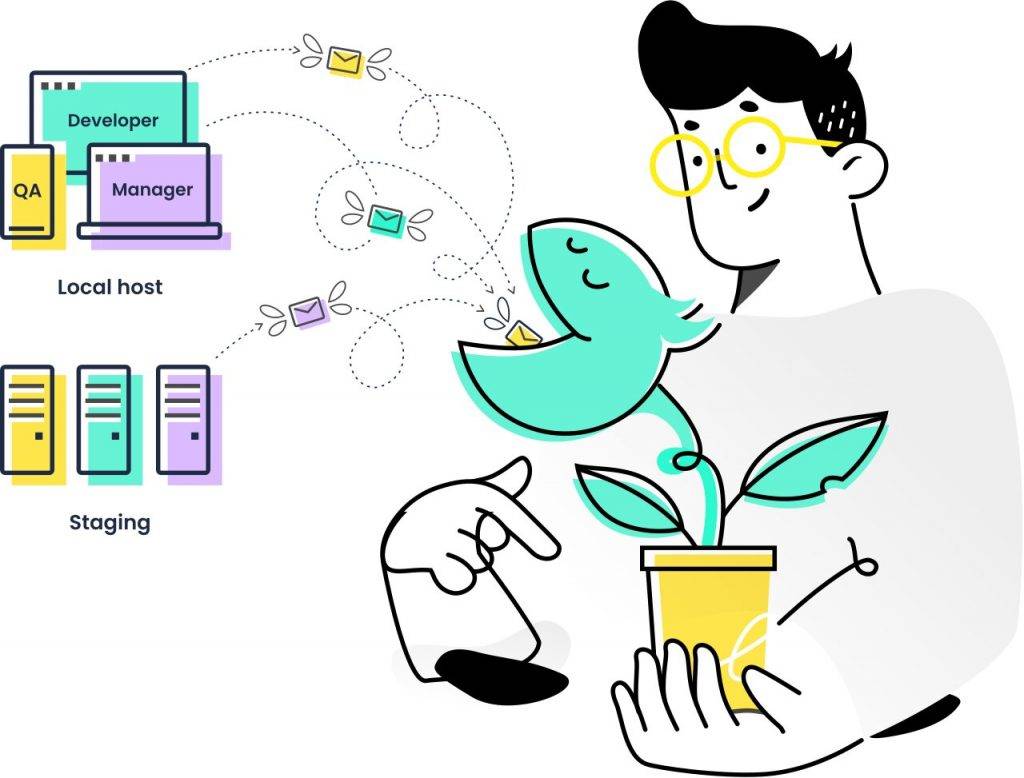Even in the age of instant messaging services or collaboration software used by businesses, email continues to hold its dominance as the method of choice for communication. Be it for internal communication or reaching out to consumers, the popularity of emails can’t be ignored. Hence, it’s also important to ensure that the right email with all the elements that are working goes to the users. And that’s where email testing software comes into the picture. Mailtrap is among the most popular software in this category, and we recently got in touch with its Managing Director, Sergey Korolev.
PS: the interview has been edited for the sake of brevity.

Table of Contents
1) Could you tell us about Railsware, the parent company behind Mailtrap?
He replied “The parent company Railsware is a service company, and we have two wings of business: one is consulting, and the other is products. So, it’s while consulting, where the idea of Mailtrap popped up as we were building products for our customers, and it emerged as a solution to resolve problems. We started new projects, and Mailtrap became a default mail testing service for our own needs. We also have another product called Coupler.io, which is for importing data from various places to Google Sheets.“
2) What were the insights that led you to the launch of Mailtrap?
He said that “the story is pretty simple. It started with our own faux pas 10 years ago when we were testing some features on the staging. One of the feature was connected with sending the transactional email. And the email was sent to hundreds of thousands of real users, while it was just a test. All the users who received them thought this a real notification about something, but it was just a test. I heard such stories from our friends and developers too.“
“It was then we decided to do something simple and set up a service that just catches all the SMTP traffic from the staging and development environment and let you navigate those emails. This would also allow one to get more details and analyze the email(s) from the different perspectives and share it with your team members. That’s the origin story of Mailtrap,” he added.
3) Can you share the evolution of Mailtrap as a product since its inception?

Mr Korolev told us that “I must say that for a certain period of time, it was just a tool that catches SMTP traffic. Later, more features have been added that allow you to do other kinds of testing, build automations, and do automation testing. So, you can run some scripts which emulate the real user in your application and transactional email is being sent to MailTrap. You can check through the API if this email has been received by Mailtrap. So just to confirm that, uh, kind of all the cycle works perfectly. Most recently, we have added this spam check that analyzes the content of your email. It’s an HTML check that allows you to navigate through the issues in CSS that has been used for HTML emails. So not all clients support CSS styles and we show you which email clients may have a problem with a CSS file.“
4) What’s the current userbase of Mailtrap, and what kind of industries are your biggest customers? What are the biggest markets for you?
“From the user standpoint, we have more than half a million signups. As far as industries are concerned, since Mailtrap supports transactional emails, which can be a sign-up email, invoice, or any other email that a particular app sends to the users, we’re industry independent. There’s no dependency on a specific industry. The same is the case with the geographic spread – it’s worldwide,” he mentioned.
5) How do you stand out from the competition?
He shared that “as we are developers ourselves and we’re building this tool for developers, we have an inherent advantage over the competition. Initially, we didn’t invest in marketing at all, and for many years, the community considered Mailtrap as the major tool. And when this choice is done, it’s pretty hard to change if it absolutely satisfies your needs. So today, it’s not easy to get into the market and start to compete with us. Moreover, this market isn’t huge; it’s just a normal size. In fact, there were competitors that popped up, including those that were Y Combinator’s alumni. They tried to offer something around the same service, but with some differences, but they couldn’t succeed. So, we would just try to build our product that satisfies the need of our customers.“
“We do customer development ourselves. Our customers are very loyal, so they often share some feedback with us. We try to include those recommendations into our roadmaps and deliver those features to meet their requirements,” he added further.
6) What’s your go-to marketing strategy to reach out to potential users?

Mr Sergey Korolev responded that “we have learned from our services business, and we have started to invest in marketing in general. Most of it is content marketing. We write really good content and it’s not just SEO-focused articles. It’s like real, problem-solving pieces that are long reads. That’s one of the things we do. Of course, we try to experiment with different channels, including pay-per-click ads, pre-rolls, and more, though there’s nothing fancy.“
7) How has the ongoing pandemic affected Mailtrap?
He answered that “I must say that we have seen a higher churn rate in April, May, and June. But in July, August, and September, everything got back on track, like it was before COVID. So, there are services that grew up tremendously, and then those that dropped down a lot. Our service actually was quite stable in terms of the amount of signups and paid customers. Even that higher churn rate wasn’t a dramatic one. Those users who churned have actually returned to us. So, it seems like the businesses are getting back on track, though the crisis hasn’t passed yet.“
8) What are your favorite SaaS products out there?
He commented that “I personally think that Figma is the tool that is dramatically changing the landscape of how applications are developed. So right now, it’s a tool of design and collaboration, i.e everything rolled into one, and it is very efficient and easy to use. So if you are a product team, and you don’t use Figma, I highly recommend you switch to it. I’d say Slack definitely is the tool that is just changing the way people collaborate, be it in the company itself or between companies as well.“






